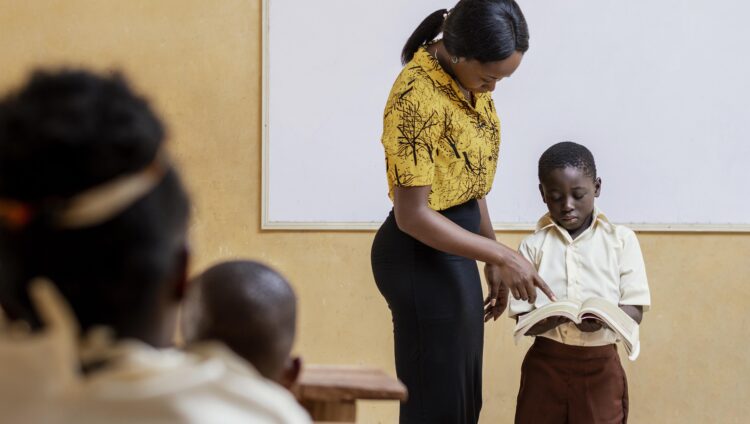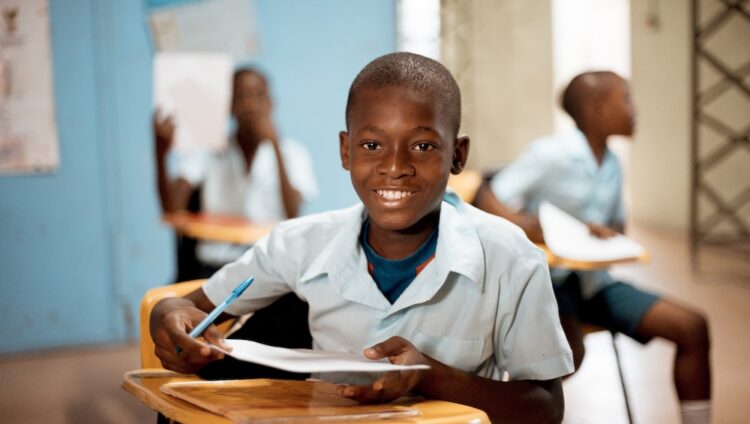Breaking the Cycle: Addressing the Mental Health Crisis in African Schools
Breaking the Cycle: Addressing the Mental Health Crisis in African Schools In classrooms across Africa, a silent crisis is unfolding. Behind the desks and textbooks are students grappling with emotional and behavioural challenges that often go unnoticed or ignored. The truth is stark: 40% of African students experience emotional and behavioural problems, many of which are directly linked to the stressors within school environments. The Root of the Problem For many children, schools are meant to be safe havens—a place to learn, grow, and thrive. However, the realities are far from ideal in some schools, particularly non-private institutions such as government-funded schools. Overcrowded classrooms, limited resources, and overwhelmed educators have created an environment where abuse and neglect can fester. Disclaimer: While abuse is a prevalent issue in some non-private schools, it is important to note that not all institutions face these challenges. Many educators and leaders are doing exceptional work despite limited resources. The Invisible Toll The consequences of this mental health crisis are profound: The Role of Educator Leaders Schools mirror the leadership at their helm. Educators and school leaders have a unique responsibility to create environments where students feel valued, supported, and empowered. But this requires action—intentional, systemic action. What Can Be Done? A Call to Action Schools are more than institutions for academic learning; they are ecosystems where futures are shaped. Every act of indifference, every unchecked label, and every neglected cry for help contributes to the growing crisis of mental ill health in African students. It’s time for school leaders to step up. Addressing mental wellness in schools is not optional—it’s a moral and social imperative. Join Us in Building Mentally Healthy Schools At African Mental Health First Aid (AMHFA), we empower educator leaders with the tools to break cycles of abuse, manage stress effectively, and create schools where students and teachers thrive. Together, we can rewrite the narrative and build schools that heal rather than harm. Let’s transform Africa’s schools into spaces of hope, resilience, and growth.
Read MoreWhy Africa Needs Its Own Mental Health First Aid(AMHFA): Time for Own Our Solutions
“Enough of Being Given Fish. We Shall Now Teach Ourselves to Fish“ For too long, Africa has relied on Eurocentric mental health models—programs and interventions that, while effective in their context, fail to address the unique realities of life on this continent. Imported solutions have been fed to us as the gold standard, and we have, knowingly or unknowingly, internalized this dependency. But it’s time to ask ourselves a crucial question: can we truly heal if the solutions we apply don’t speak our language, reflect our cultures, or align with our lived experiences? African Mental Health First Aid (AMHFA) is not just another program; it is a call to action. It challenges the status quo and offers a tailored, culturally rooted approach to addressing Africa’s mental health crisis. Here’s why AMHFA is different—and why it matters. 1. Cultural Relevance and Respect: A Model Built for Us Mental health models often overlook Africa’s diverse cultural traditions, spiritual beliefs, and community-centric way of life. They operate on individualistic principles that don’t resonate in societies where collective well-being takes precedence. AMHFA, on the other hand, is built from Africa’s own stories, struggles, and strengths. It respects and incorporates: 2. Community-Driven Healing: From Dependence to Empowerment In Africa, the strength of a community is its lifeline. Yet, many imported models are designed for isolated, individual therapy. AMHFA embraces the power of collective healing by training leaders, educators, and families to become first responders in their communities. By fostering peer support, shared learning, and communal responsibility, AMHFA moves us from dependency on external professionals to empowerment within our own networks. We must own this reality: Healing is within our hands, not in distant, inaccessible systems. 3. Breaking Stigma and Building Awareness: Addressing the Silence Stigma around mental health is a universal issue, but in Africa, it is deeply rooted in cultural taboos, myths, and a lack of understanding. Imported solutions often fail to navigate these complexities, leaving stigma untouched and the silence unbroken. 4. Prevention and Early Intervention: Acting Before Crisis Hits In a continent with the highest suicide rates globally, prevention is not optional—it is essential. Western models often focus on treatment after a crisis occurs, but AMHFA prioritizes prevention. We must own this urgency: Prevention is the most compassionate form of care. 5. Leveraging African Wisdom Africa has a deep connection to creativity and nature—expressed through music, dance, storytelling, and our spiritual ties to the land. AMHFA taps into these inherent strengths. These approaches resonate far more with African communities than Eurocentric one-on-one therapy models. We must own this identity: Our traditions hold the keys to sustainable healing. 6. Sustainable Solutions: Building Systems That Last Imported solutions often come and go, leaving little behind. AMHFA is different—it focuses on creating long-term change through: We must own this responsibility: Healing must be a legacy, not a fleeting intervention. A Call to Action: Africa, It’s Time to Lead Ourselves We have been led for too long by solutions that don’t fit. We have accepted systems that don’t understand us, and in doing so, we have perpetuated dependency. But AMHFA offers something different—a chance to reclaim ownership of our mental health narrative. AMHFA is built by Africans, for Africans. It is culturally relevant, community-driven, and deeply rooted in our traditions and values. It challenges us to look inward, to trust our strengths, and to create solutions that are not just effective but transformative. We must own this truth: Africa doesn’t need imported solutions. It needs solutions that speak its language, reflect its realities, and honour its stories. Are You Ready to Join the Movement? AMHFA is not just about addressing mental health; it’s about redefining how Africa heals. Together, we can create a future where mental wellness is woven into the fabric of our communities, workplaces, and schools. Let’s own it. Let’s lead it. Let’s heal. Contact AMHFA your Mental Wellness Needs www.shiberotrust.org Email:spht@shibero.com
Read MoreMental Health Has to Be Part of Schools’ Curriculums!
We need to save our children! They are seriously affected by depression and anxietyleading to suicides at a very young age. Here are some statistics:In Africa, 2 in 7 young people aged 5 to 16 have a mental health problem. 2 in 10 areaffected by depression anxiety and posttraumatic stress that is around five children inevery class. Suicide is the ninth most common cause of death for young people in Africaage 10-14. Adolescents and teens aged 10-19 years, 37 million of them live with amental disorder, anxiety and depression accounts for almost 50 per cent of mentaldisorders (unicef.org/media/109886). This picture is quite frightening, considering that the figures of children affected bymental ill health continues to sky rocket. It is time for schools both rural and urban areasto take the mental health of children seriously, enough to include it in the curriculum because mental health issues are becoming more common in children and adolescentsin Africa. Looking after one’s mental health can preserve a person’s ability to enjoy lifeas there can be no health and joy without mental health. Depression is on the riseThere are 322 million people who live with depression globally, 29.9 million ofthese are in Africa including children – and 66 million of these are women.(Worldhealth Organization).Mental illness, particularly depression, is predicted tobecome one of the major health burdens in the future..As childhood and adolescent mental health disorders are already so common inAfrica, and depression is on the rise, we need to do something in schools. It’sbaffling that we are not equipping our children with an understanding of mentalhealth and self-care. Undiagnosed, inadequately treated or untreated mentalillness can seriously affect their ability to learn and grow. It can lead to negativecoping mechanisms and at worst, may result in suicide. The importance of early interventionLearning about early warning signs, and taking action can help. It can reduce theseverity of the illness, and it may even be possible to prevent or delay thedevelopment of a major mental illness. Some of these signs are apathy, feelingsof disconnection, nervousness, unusual behavior, withdrawal, mood changes anda drop in performance.Mental health education should be part of thecurriculumWe need to be working towards a school environment where students are able torecognize when they’re dealing with mental health issues and feel they can askfor help. Just as they do, with their physical health. Just as physical education is part of the curriculum in schools, mental health awarenessand education should be too. Our children spend most of their day at school. We needto empower them with knowledge about mental illness.Mental health is as important as the physical health, in fact more important than thephysical health, because it’s out of our mental health state that that we feed our physicalhealth, and from the space that we live our everyday lives, wherever we are andwhatever we are doing. It all comes back to our mental state. It all leads to teachingmental and physical health together leads to better outcomes for students and thewhole school community. If children, teachers and the school communities learn aboutmental health in school, not only students, but the whole school community will managetheir lives better.This in turn will also remove the fear that lies around mental health, help break themyths, taboos and stigma of mental ill health, something that is prevalent in Africa andnormalize mental health and all the negative issues that surround it.Increased Risk of Substance AbuseIn this day and age, children are no longer ‘to be seen’ and not heard. The link betweenpoor mental health and increased substance abuse is undeniable. The use of drugs andalcohol is a way for many people to cope with their feelings.If children learn about mental health in school, they will know how to better deal withtheir emotions. This will result in fewer young people turning to drugs and alcohol as anescape.ConclusionPrimary and high schools are a time of important change and development. It is also atime when mental health problems such as depression and anxiety first emerge. Schools can be an amazing source of support for children during these years, but theycan also be a source of strain or stress, and it is often in schools where symptoms ofmental health problems are first identified. Mental health education is not yet mandatory in schools. Until it is, teachers andthe school communities need to help shine the light on the concept of self-care.And, they need to emphasize the fact that mental health is an integral part ofhealth. A cultural shift in attitudes about mental health needs to start with the young. Theonly way they’re going to understand more about mental health and stopstigmatizing is if they receive the necessary education.Schools need to foster an environment in schools where mental health issuescan be identified and addressed without being stigmatized. Awareness should beraised about mental health crises, such as self-harm, substance abuse, eatingdisorders and other negative coping behavior needs to be created.If everyone in schools is empowered with knowledge, and dialogue isencouraged, students will have the freedom to open up about what they aregoing through. This will allow them to get the support they need before it’s toolate.Making mental health education a mandatory part of the school curriculum is longoverdue. Shibero Akatsa(Ms)
Read More

